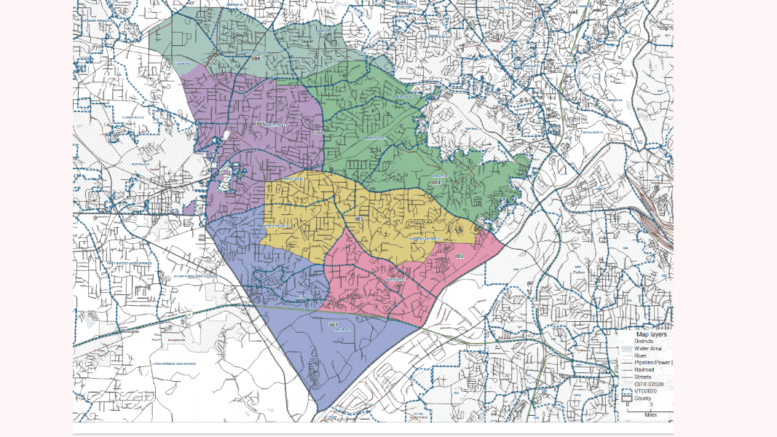At the Mableton City Council‘s October 6 work session, the city’s Economic Development Director Artie Jones made a presentation to the council on how the city could utilize a Tax Allocation District to fund infrastructure projects that support redevelopment.
The slide presentation described how the system works as follows:
- Property values inside a district are frozen at a “base” level.
- As redevelopment occurs, tax revenues above that base (the “increment”) go into
a special fund. - Money is used to pay for public improvements (roads, utilities, housing, etc.) or
repay bonds. - When costs are paid off, the district ends, and all tax revenue returns to the city,
county, and schools.
The preliminaries to putting a TAD in place, defined in Georgia’s Redevelopment Powers law, are that the city council must first pass a resolution, then the General Assembly passes local legislation, and then voters approve or reject it in a referendum.
Jones recommended that the city move on the initiative soon, so that the TAD referendum can be placed on the 2026 ballot.
If the referendum passes, planning for the TAD, with public input session, would begin in early 2027.
“It’s a great tool where you can leverage future tax revenue that would not have been there, had (the district) not been developed in the first place,” Jones said.
“What can TAD funds be used for?” Jones asked. “It’s used for public infrastructure, it can be used to purchase properties, streetscape improvements, affordable housing, construction on rehabilitation, rehabilitating public facilities like parks, plazas and park events, and also land acquisition and site remediation.”
“Let’s just imagine that there’s a piece of property, it’s worth $2 million,” he said. “Now a developer comes in and he invests an additional $10 million in this piece of property.”
He said the taxes collected on the original value will still go to the county and the school board, but the taxes on the increased value will be available for use within the TAD.
Jones said that in the City of Atlanta, TADs had been utilized in a number of redevelopment projects, including Atlantic Station and the Atlanta Beltline.
What is a Tax Allocation District?
In Georgia, a Tax Allocation District (TAD) is a special financing tool local governments use to encourage redevelopment or economic growth in areas that are blighted, underdeveloped, or in need of infrastructure improvements.
It’s defined in the section of Georgia code involving the redevelopment powers of local governments.
TADs are Georgia’s version of what’s called Tax Increment Financing (TIF) in many other states. The idea is to use the future increase in property tax revenue from new development to pay for improvements that enable that development.
Here’s how it works: when a city or county creates a TAD, the total property value within the district is “frozen” at its current level for regular tax purposes. As private investment comes in — new buildings, renovations, or other improvements — property values rise. The additional tax revenue from that increase (the “tax increment”) doesn’t go into the city or county’s general fund right away. Instead, it’s set aside to pay for infrastructure, site cleanup, public spaces, or other development costs within the TAD. The local government can also issue bonds backed by this future tax increment to get the money up front.
Importantly, property owners in a TAD don’t pay higher tax rates. Their taxes go up only if the value of their property rises — just like anywhere else. The difference is in where those increased revenues go: inside a TAD, the increase is reinvested locally rather than spread across the entire jurisdiction. Once the bonds are paid off or the redevelopment goals are met, the TAD dissolves, and the full property tax revenue flows back into the city, county, and school district general funds.
Because school taxes make up a large share of property tax revenue, any TAD that includes them must get approval from the local board of education. That safeguard ensures that school funding isn’t diverted without consent. Properly managed, TADs can turn neglected areas into thriving economic centers — though critics warn that if projections fall short, local governments could end up with debt or slower growth in their general tax base.
For more information on the advantages and risk of TADs, read this article from Research Atlanta.
